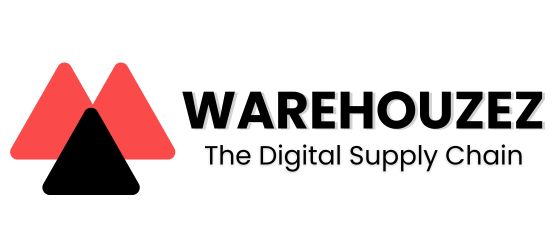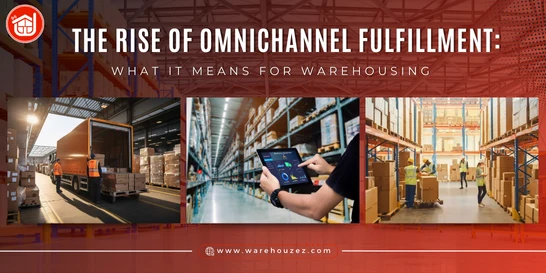An Essential Guide to Supplier Relationship Management (SRM)
An Essential Guide to Supplier Relationship Management (SRM)
In today's competitive marketplace, establishing and maintaining positive relationships with suppliers is essential for success. Supplier Relationship Management (SRM) is a strategic approach that allows organizations optimize their supply chains, reduce costs, and improve overall performance. SRM encompasses a set of processes, strategies, and technologies that optimize interactions with suppliers and vendors. It influences everything from cost-efficiency to product quality. Thus, for businesses striving to stay ahead of the curve, effective supplier relationship management is paramount. It involves fostering collaboration, driving innovation, mitigating risks, and enhancing operational efficiency.
In this particular blog post, we will illuminate you with everything you need to know about Supplier Relationship Management (SRM). This will certainly help you elevate your organization's collaborative endeavors and achieve long-term success. So, let's get started!
Introduction to Supplier Relationship Management (SRM)
In the most inclusive sense, Supplier Relationship Management (SRM) refers to a strategic approach that organizations employ to effectively manage their interactions with suppliers. It involves the systematic development as well as management of supplier partnerships to maximize value, minimize risk, and foster collaboration. Unlike traditional procurement practices, which often focus solely on transactional aspects, SRM goes on to take a holistic approach, considering long-term relationships as a key driver for success. This involves understanding suppliers' capabilities, aligning goals, and actively collaborating on innovation and continuous improvement. SRM not only streamlines operational processes but also plays a crucial role in mitigating risks, improving supply chain resilience, and ensuring a sustainable and mutually beneficial relationship.
In today's competitive business environment, where supply chains are intricate and globalized, SRM has become increasingly important as organizations recognize the impact of strong supplier relationships on their overall bottom line, competitiveness, and growth.
Supplier Relationship Management Process
Let's take a look at the steps involved in an effective supplier relationship management process. These essential steps help in ensuring efficient collaboration with external partners, elevating organizations towards enhanced efficiency, risk mitigation, and sustained success.
1. Segment Suppliers
The first significant step in the SRM process involves identifying and segmenting suppliers based on various criteria, such as strategic importance, risk factors, and performance levels. Aspects such as cost-effectiveness, delivery timelines, and quality should also be taken into consideration. By categorizing suppliers into different segments, organizations can tailor their approach to each group, allocating resources effectively and prioritizing efforts where they will have the most significant impact.
2. Develop a Supplier Relationship Management Strategy
There's no denying the fact that developing a robust SRM strategy is crucial for effective supplier relationship management. This involves setting clear objectives, defining performance metrics, and outlining communication channels. A well-structured strategy aligns the organization's goals with supplier expectations, improving collaboration, and providing a roadmap for nurturing long-term, mutually beneficial relationships.
3. Execute and Track Results
Execution is where the SRM strategy comes into practice. This stage is all about implementing the planned initiatives, fostering open communication, and actively engaging with suppliers. After execution, it is necessary to regularly monitor the results. Tracking results through key performance indicators (KPIs) is essential to assessing the success of the SRM process. Regular evaluations ensure that the organization stays on course, identifies areas for improvement, and adapts its strategies to evolving supplier dynamics, ultimately contributing to sustained success in supplier relationships.
Best Practices and Strategies for Better Supplier Relationship Management
Let's now learn the best practices and strategies for better supplier relationship management (SRM):
1. Define Goals and Objectives
Clearly defining goals and objectives sets the foundation for a successful SRM strategy. Organizations need to articulate their expectations, whether they relate to cost reduction, quality improvement, or innovation. Aligning supplier relationships with strategic business objectives ensures a cohesive and purposeful approach to collaboration. Well-defined goals help create a shared vision, enhancing the overall effectiveness of the partnership.
2. Set Open Lines of Communication
Another strategy for effective supplier relationship management is establishing transparent and open lines of communication with the suppliers. This ensures that expectations, feedback, and updates are exchanged seamlessly. Additionally, regular meetings, status reports, and open channels can facilitate transparency and visibility. This helps address issues proactively, fostering a collaborative and responsive partnership.
3. Negotiate Contracts
Well-negotiated contracts lay the groundwork for a mutually beneficial relationship. Clearly highlighting terms, conditions, and performance expectations helps prevent misunderstandings and disputes. A comprehensive contract should address key elements such as delivery schedules, quality standards, pricing structures, and dispute resolution mechanisms. Negotiating contracts promotes organizational and supplier growth.
4. Monitor Performance and Look for Improvement Opportunities
Regularly monitoring supplier performance against established KPIs is crucial for identifying strengths and areas for improvement. Organizations should regularly assess factors such as cost-effectiveness, delivery timeliness, and quality. Performance assessments provide meaningful insights into adherence to contractual agreements, allowing organizations to address issues promptly and collaborate on improvement initiatives for enhanced efficiency and quality.
5. Utilize Innovative Technology: Supplier Relationship Management Software
Embracing cutting-edge technologies, such as Supplier Relationship Management software, enhances the efficiency and effectiveness of the overall process. It has innovative features such as performance tracking, automated communication, and data analytics, enabling organizations to streamline operations, gain insights, and make data-driven decisions. By leveraging technology solutions, businesses can optimize their supplier relationships and adapt to ever-evolving market dynamics.
Benefits of Effective Supplier Relationship Management
The benefits of effective supplier relationship management are manifold, ranging from cost efficiencies to improved performance and productivity.
Let's tap into the benefits of SRM:
1. Cost Reductions and Savings
Proper SRM contributes to significant cost reductions and savings through collaborative efforts. By fostering strong relationships with suppliers, organizations can negotiate favorable terms, optimize processes, and identify cost-saving opportunities, ultimately enhancing their overall financial performance.
2. Customized Solutions and Services
Well-managed supplier relationships allow for the customization of solutions and services. Close collaboration with suppliers enables organizations to tap into their expertise, leading to tailored products or services that better meet specific needs and market demands. Thus, by having good relations with vendors, businesses can expand their expertise and deliver personalized solutions, services, and products.
3. Enhanced Customer Satisfaction
Through top-notch quality, timely delivery, and innovative solutions, organizations can meet and exceed customer expectations, thereby strengthening brand reputation and loyalty.
4. Improved Performance and Productivity
Effective SRM focuses on continuous improvement and performance enhancement. Regular monitoring and collaboration with suppliers result in streamlined processes, reduced lead times, and improved overall productivity, contributing to a more efficient supply chain.
5. Strategic Alignment and Mutual Growth
Successful SRM aligns supplier goals with organizational objectives. This strategic alignment creates a foundation for mutual growth and long-term success. Suppliers become trusted partners, invested in the success and sustainability of the overall business landscape.
Summing Up
To summarize, navigating the intricacies of Supplier Relationship Management (SRM) is imperative for organizations striving to thrive in today's dynamic business landscape. In this essential guide, we have provided valuable insights into the process, best practices, and strategies necessary to cultivate strong and mutually beneficial partnerships with suppliers. From defining goals and fostering transparent communication to leveraging innovative technology and managing risks, the journey through SRM is one of continuous effort. By embracing the principles outlined in this guide, organizations can optimize their supplier relationships, drive operational excellence, and ultimately achieve sustainable growth. As businesses evolve, the commitment to effective SRM certainly remains a cornerstone of success, enabling organizations to adapt, innovate, and prosper amidst ever-changing market dynamics.



